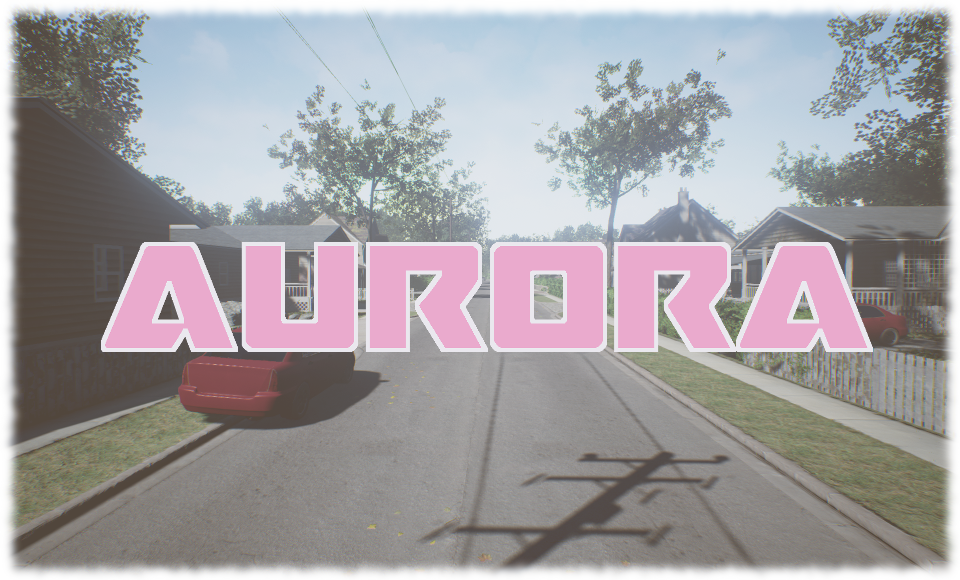
History
In the 1800s, Aurora was farmland, speckled with a few houses for fishermen along the southern waterfront. When fortunes in the area began to rise, many residents who were too wealthy and proud to remain in rural surroundings but not wealthy enough to move in the upper circles of Bayview's elite moved east. These settled in the area now called Waltzer Square. At the same time, the city began to encroach from further east. A Thoroughfare known as "Light Street," so called because it was the furthest western edge of the city's gas lamp system, became the unofficial border for urban development. A few industrialists also built small factories in the former farmland between the two bands of settlement or near the waterfront.
The fire of 1908 swept through Light Street but spared the rest of the area. On the whole, the fire of 1908 proved a boon to Aurora. Middle class and some wealthier residents of the city center, displaced by the fire, flocked to Aurora, and the residential areas on its west side began to expand. During the first few decades of the twentieth century, this area adopted the name "Waltzer Square" from one of its many small plazas and became known for its elegant townhouses and spreading shade trees. Indeed, Aurora's trees and small, public green spaces have become one of the characteristic features of the area.
In 1934, the lighthouse burned down, and most of the waterfront warehouses and other industrial buildings began a slow decline into abandonment and neglect.
After World War II, business leaders sought to reverse this trend and turn the area into a retail center for the district. The decades after World War II also saw increased demands for housing and office space encouraged the subdivision of Aurora's remaining farms and the demolition of most of its industrial sites.
Over the course of the early twentieth century, Light Street was rebuilt with a mixture of apartment blocks and office space. In 1955, it became the site of the city's new police headquarters, placed here because of its centralized location and considerable space for development (at the time). Like nearby Common Street in downtown, it suffered from the urban economic downturns of the second half of the century, and it remains the poorest among Aurora's many middle-class neighborhoods.
By the 1960's, Aurora had become known as a center for middle class apartments and a few detached homes, as well as prime office space. This trend culminated with the opening of Eos Park, Titan City's first "office park" (and one of the first in the country).
The Daybreak Ridge waterfront has been redeveloped several times; most recently in the 1990's when the abandoned industrial buildings were converted into retail and residential space. Today, Daybreak Ridge is one of the most eclectic and dynamic areas in the city, widely praised for its thriving mix of apartments, condos, offices, and shops.
Neighborhoods
- A low rise in the topography of Daybreak Ridge gives this neighborhood its name. This neighborhood has been rebuilt several times over, and is now an eclectic mixture of “International”, “Post-modern” and a few surviving other styles of architecture such as repurposed factories and old Colonial architecture. The tree-lined streets are a feature throughout Aurora. This neighborhood is also a retail center, supporting both large and small corporations and shops. There are no towering skyscrapers here, but there are a few mid-rise office towers along the waterfront.
- Eos Park is ideal for most “International” style structures that are up to a maximum of 14 stories in height (mid-rise). This neighborhood consists primarily of office parks in the “International” and “Post-modern” styles, interspersed with parking lots, ornamental green spaces (trees and plants and things), and perhaps a fountain or few. This neighborhood is more open than the traditional densely packed spaces such as Downtown.
- Hollybriar brings a taste of planned suburbia, right in the heart of Titan City. A large swath of the indigenous forest has been maintained, though it has been slowly shrinking as developers encroach further and further into its domain. Most of the homes here date back to the 1940s and ‘50s, with the peaceful, picturesque setting where children can walk to school safely and block parties are the norm.
- The most built-up section of Aurora, Light Street borders the Downtown neighborhood of Common Street. Most of the structures in this neighborhood date from the 1960s and ‘70s, mid-rises in the “International” style that are primarily brick or plaster-faced, and nothing predates the Great Fire of 1908. Most of the buildings are offices, though there are a few apartment buildings, which add a more urban feel to the neighborhood, including sports courts and play areas. Grafitti when found is relatively uncommon, likely caused by the heavy police presence centering around the Titan City Police Department headquarters building.
- Named for a small, open area surrounded by brownstones, Waltzer Square is the wealthiest part of Aurora. It was originally redeveloped from farmland to townhouses in the late nineteenth and early twentieth centuries, and received an additional economic boost from wealthy individuals displaced from the city center by the fire of 1908. Today, it combines historic townhouses with well-kept, historic detached homes, interspersed with spots of greenery and a few upscale retailers. Like most parts of Aurora, Waltzer Square has retained its large, spreading trees, which shade many of the residential streets completely in the spring, summer, and fall months.